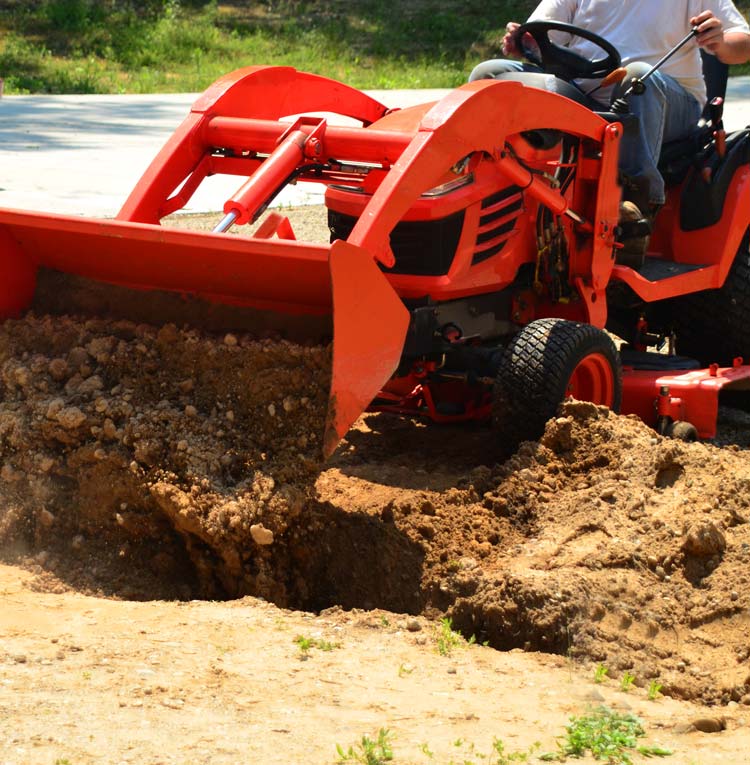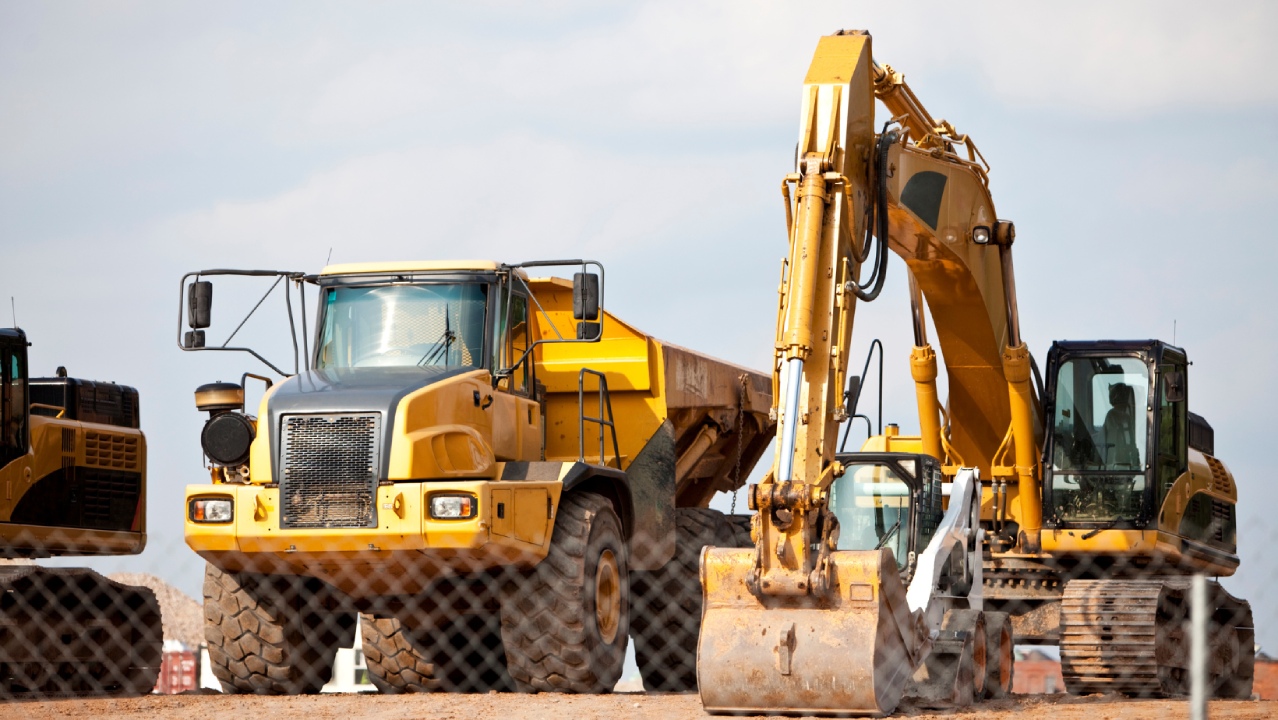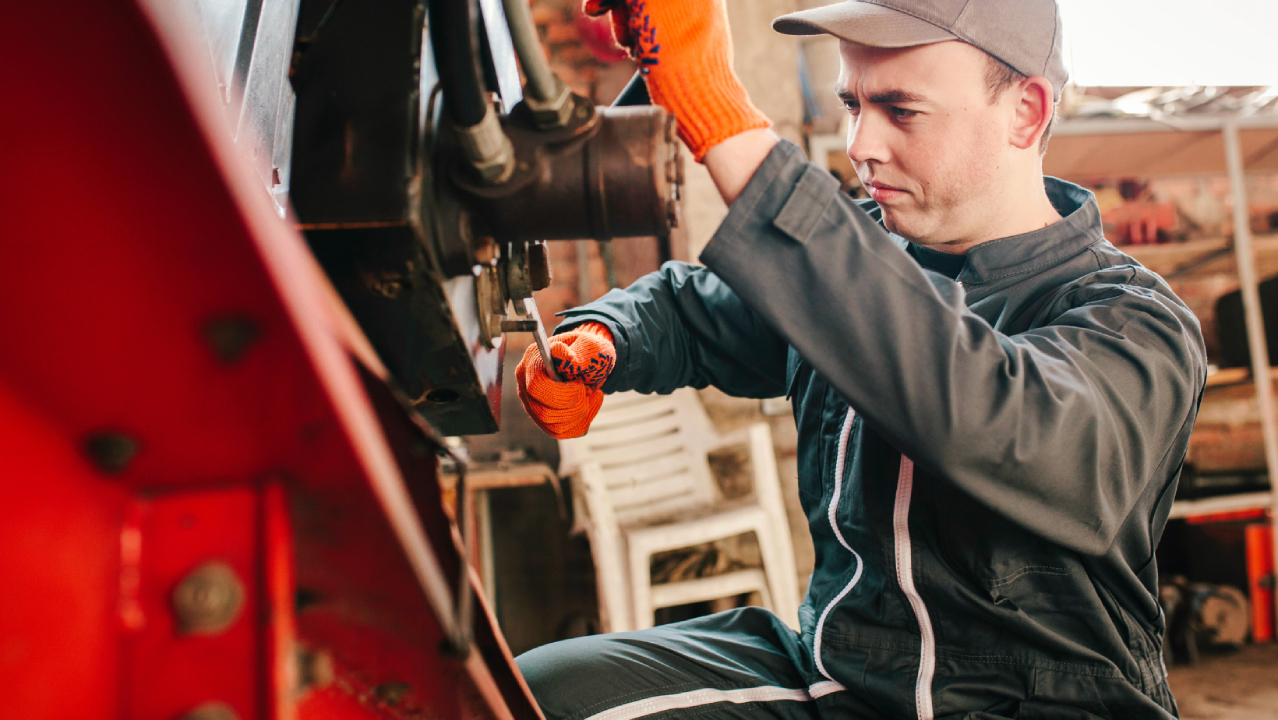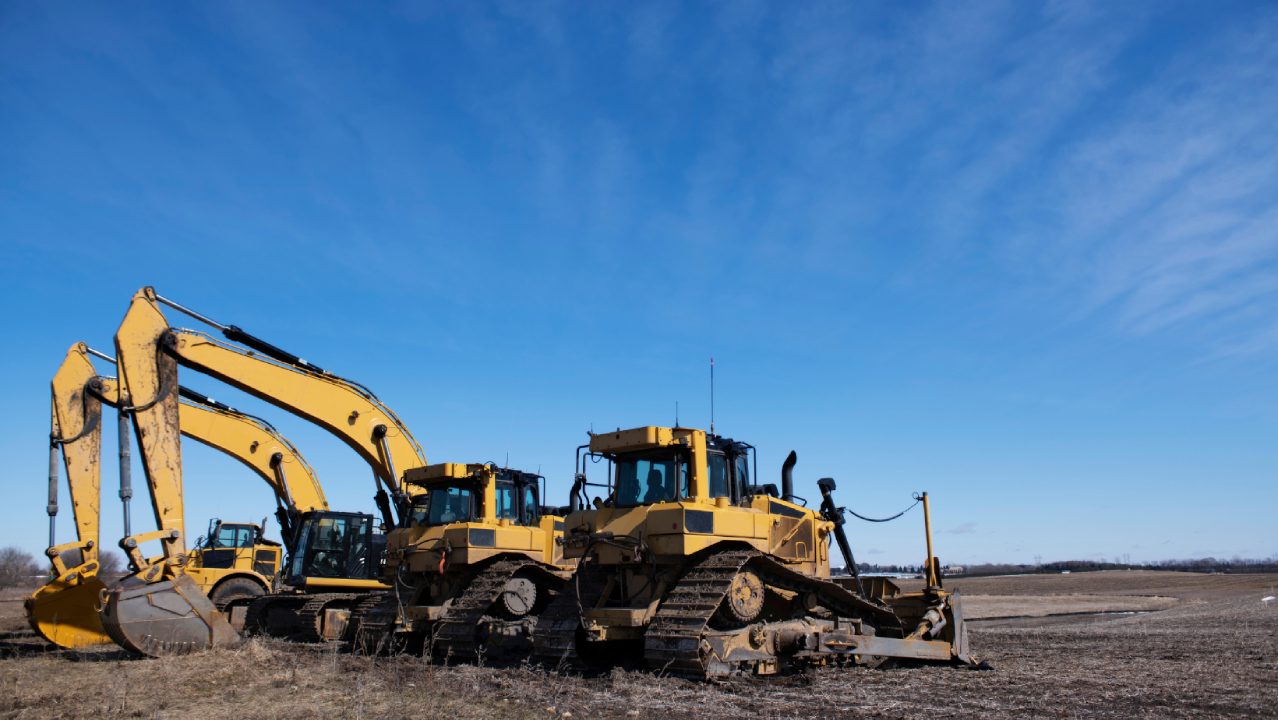A skid steer loader is one of the most frequently used tools on a job site. To keep it performing productively over time, operators should follow these simple operating tips to extend the life of the skid steer loader.
TIP NO. 1: KNOW YOUR SURROUNDINGS
Skid steer loaders are extremely valuable tools for contractors because of their ability to maneuver in tight places. Because of this, operators must always be conscious of their surroundings. From traveling around a work site to operating an attachment, operators must constantly be aware of where the skid steer loader is operating, how it is operating and its proximity to existing infrastructure, landscaping or other job site objects during operation. It is crucial for the operator to have good visibility of the entire job site at all times, which means operating with the loader arms low to the ground whenever possible.
When it comes to running the attachment, operators need to be aware of their surroundings. Operators should also be familiar with the existing landscaping and infrastructure, as well as how much area the loader needs to operate when equipped with an attachment. For example, when an operator is using a snowblower or a mulcher attachment, it’s critical to know where the discharged material will go. Or when the loader is equipped with tree moving equipment, an operator needs to account for the height of the tree in relation to the attachment when working in the vicinity of power lines, buildings, other infrastructure and existing landscaping.
As always, it’s also critical for operators to ensure that bystanders are clear, and that telephone, gas and power companies are called to locate the area for underground utility lines.
When it is necessary to work with the loader arms raised, operators should maintain a good line of sight not only to the attachment but to all obstacles in near proximity of the loader. Unintentional contact, even the slightest bump, with objects in the loader’s work zone can result in potential structural damage, like cracks or dents, which could inhibit the machine’s future performance and productivity.
A lot of unexpected problems can be caught or prevented if a skid steer loader operator simply takes 15 minutes before start-up each day to check the fluids and general condition of the machine.
TIP NO. 2: MATCH THE ATTACHMENT TO THE MACHINE
A skid steer loader coupled with a variety of attachments can totally revolutionize a construction or landscaping business, enabling contractors to bid on more projects and to work in all weather and ground conditions. With such a wide variety of attachments available for use on a skid steer loader, it is important that the attachment is correctly sized for the machine. One size does not fit all. For instance, an oversized attachment may become too heavy for the loader to repeatedly lift overhead, causing premature wear to the loader’s lift arm cylinders. Also, the wrong size of attachment can cause the machine to become off balance during operation, which could also result in extra stress on the machine’s components resulting in accelerated wear. Correctly sizing the attachment to the skid steer loader’s particular capacity will increase cycle times and utilization rates.
It is also important to pay attention to each attachment’s particular flow requirements. Attachments that require continuous or high hydraulic flow, such as augers, stump grinders and brooms, do not work as efficiently if the loader’s hydraulic specifications do not meet the attachment’s needs. This scenario can cause unnecessary strain on the skid steer loader’s hydraulic systems, resulting in sluggish operation or no flow to the attachment at all.
An equipment distributor can help contractors match the right size of attachment to a loader’s horsepower and hydraulic capabilities. Features such as float function, electric-over-hydraulic and 10 to 20 gpm of hydraulic flow are common attributes on skid steer loaders. Equipment distributors will also train contractors on using an attachment for the first time — it is important to know how to operate the attachment in forward and reverse, as well as how to use the float function. Distributors will also make sure the loader is wired correctly for electric-over-hydraulic. Matching the attachment’s hydraulic needs to the skid steer loader’s specifications will allow operators to be productive on every job site.
TIP NO. 3: MAINTAIN PROPER TIRE INFLATION
Tires are one of the most important components to inspect daily on a skid steer loader. Tires need to be checked frequently for tread depth, wear, damage and pressure. And, tires need to be properly inflated at all times to ensure machine stability for safe and efficient operation.
Because skid steer loaders have no frame suspension to soften the ride for the operator, the air in the tires provides the only cushion between the loader and the ground. Proper tire pressure and balance is critical for stability and durability of a loader. Under-inflated tires can decrease the overall stability of a unit.
One noticeable characteristic of this is that a loader that is operating with under-inflated tires will tend to bounce more when going over rough terrain.
Over-inflated tires are stiff and unyielding, giving the operator a harsher ride and making the tires more susceptible to damage. Also, make sure that all four tires are evenly inflated. If the tire pressure from wheel to wheel varies greatly, the whole unit can become less stable due to uneven compression.
Also, tires should be inflated to the maximum pressure indicated on the sidewall of the tire. Rims should also be inspected for dents, rust, cracks and scrapes and replaced as necessary. A blowout or rim failure can lead to more serious consequences. These scenarios can result in accelerated wear and tear on the machine, as well as possible structural damage to the machine in the event of a tire failure. Maintaining proper tire inflation ensures that operators are able to work as efficiently and effectively as possible.
TIP NO. 4: KEEP A REGULAR MAINTENANCE ROUTINE
A skid steer loader’s productivity can be significantly impacted by following a preventive maintenance routine. In fact, the number one reason for machine failure in the field is negligence of the preventive maintenance tasks. It really is easier to deal with things little by little rather than have something fail and face the consequences — costly repairs and expensive downtime. For example, if the machine isn’t regularly cleaned, lubricated and serviced, it can slow down or freeze, which affects its productivity.
Maintenance routines should be based on the manufacturer’s recommended guidelines, which are simple and easy to follow, yet provide attention to detail. For instance, a lot of unexpected problems can be caught or prevented if a skid steer loader operator simply takes 15 minutes before start-up each day to check the fluids and general condition of the machine. Keeping up with fluid and filter changes, as well as chain tensioning, are crucial to long-lasting productivity. Also, it is important to regularly review manufacturer product and service bulletins and to make the necessary updates, based on the unit’s serial number, as recommended.
At the end of each day, while a skid steer loader is still warm, it is important to wash down the unit — removing any materials that accumulate in the chassis and engine compartment and contaminate the machine. The end of the day is also the time that operators should report the hours on the unit, as well as how it is being used during the day including what kind of materials it is handling and how far the materials are being transported, to the fleet manager.
Even if it’s not always convenient to take the time to perform routine maintenance duties, it’s worth every minute if the skid steer loader continues to perform productively in the field. Good operating procedures are always based on the equipment manufacturer’s recommended guidelines.







